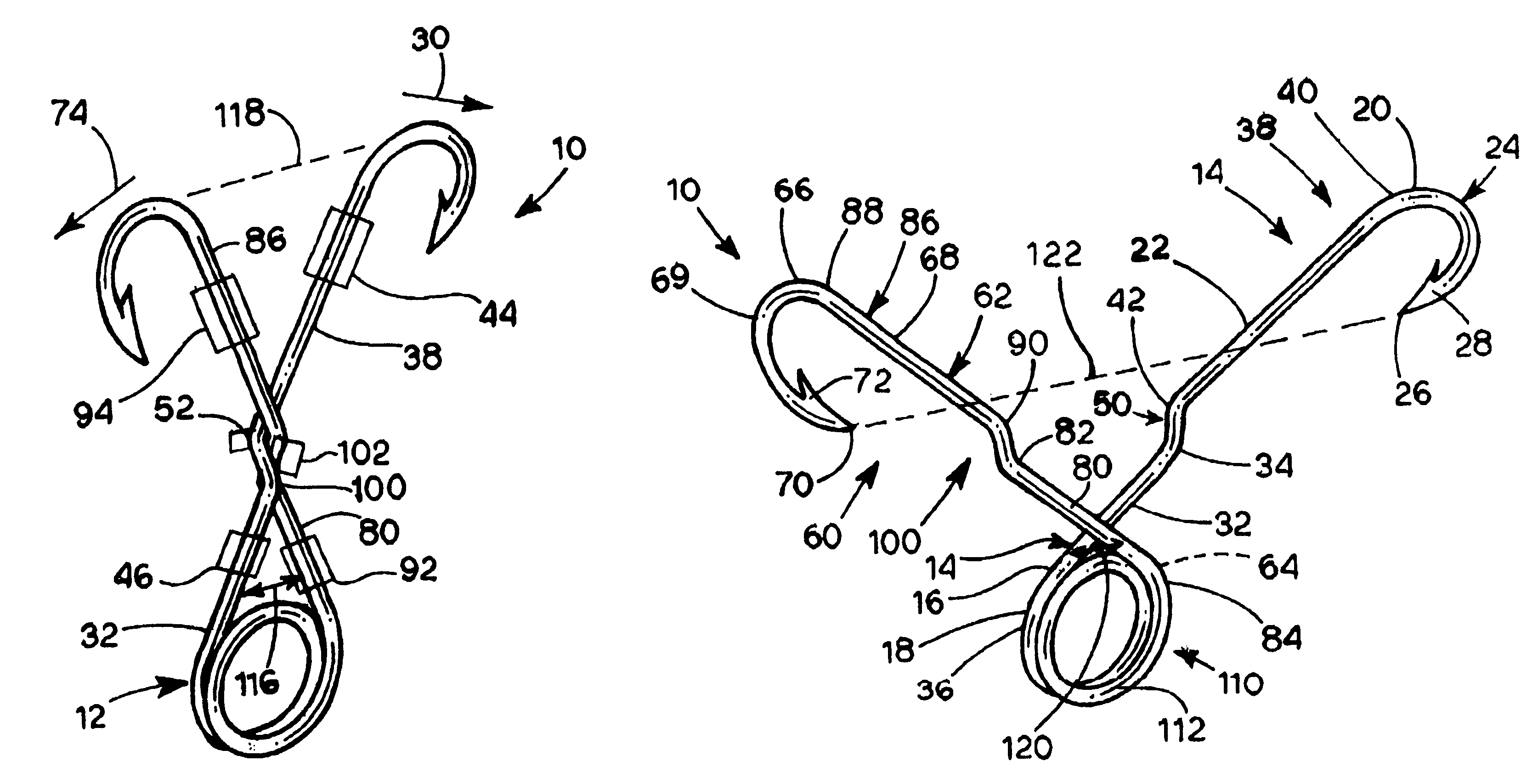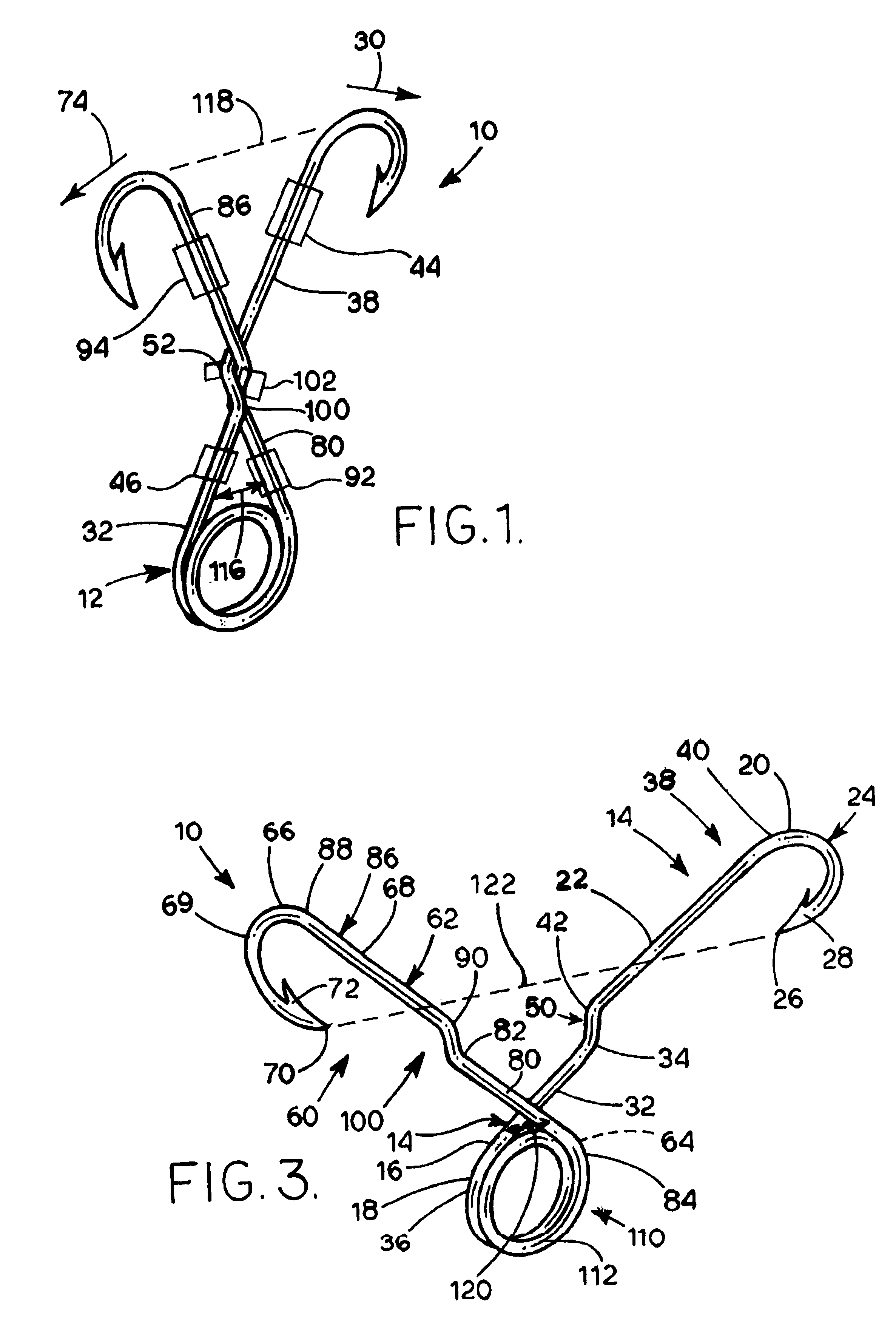Automatic fishhook
a hook and automatic technology, applied in the field of fishing, can solve the problems of improper setting of the hook, frequent misses of experienced fishers, and increased size and variety of fisheries, and achieve the effect of reliably operating and resisting harsh environmen
- Summary
- Abstract
- Description
- Claims
- Application Information
AI Technical Summary
Benefits of technology
Problems solved by technology
Method used
Image
Examples
Embodiment Construction
Other objects, features and advantages of the invention will become apparent from a consideration of the following detailed description and the accompanying drawings.
Referring to FIGS. 1-5, it can be seen that the invention is embodied in an automatic fishhook 10 comprising a one-piece monolithic body 12. The one-piece monolithic nature of body 12 ensures that fishhook 10 will not require a plurality of interengaging elements that may become damaged or non-functional due to the difficult environment in which fishhook 10 will be used. Body 12 includes a first leg 14 having a body 16 which includes a proximal end 18, a distal end 20, and an axial dimension 22 extending between proximal end 18 and distal end 20. A ninety-degree loop portion 24 is located on distal end 20 of first leg 14 and includes a free end 26, and a barb 28 on free end 26 of ninety-degree loop portion 24 of first leg 14. Free end 26 of first leg 14 is spaced from body 16 of first leg 14 and ninety-degree loop porti...
PUM
 Login to View More
Login to View More Abstract
Description
Claims
Application Information
 Login to View More
Login to View More - R&D
- Intellectual Property
- Life Sciences
- Materials
- Tech Scout
- Unparalleled Data Quality
- Higher Quality Content
- 60% Fewer Hallucinations
Browse by: Latest US Patents, China's latest patents, Technical Efficacy Thesaurus, Application Domain, Technology Topic, Popular Technical Reports.
© 2025 PatSnap. All rights reserved.Legal|Privacy policy|Modern Slavery Act Transparency Statement|Sitemap|About US| Contact US: help@patsnap.com



